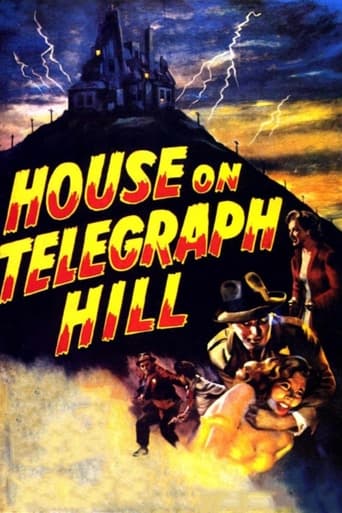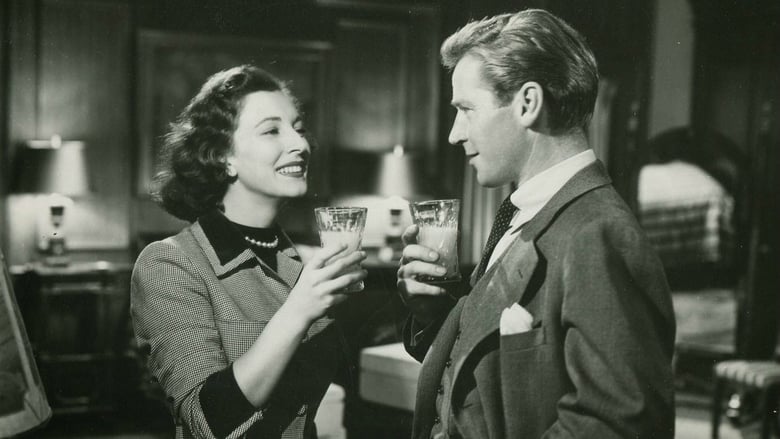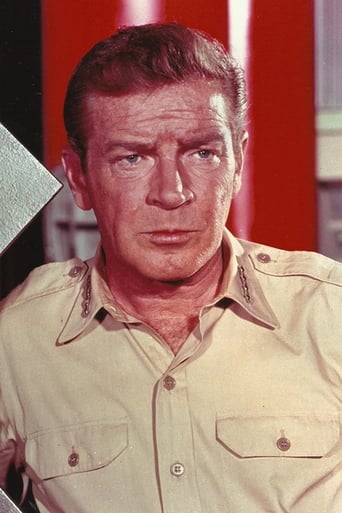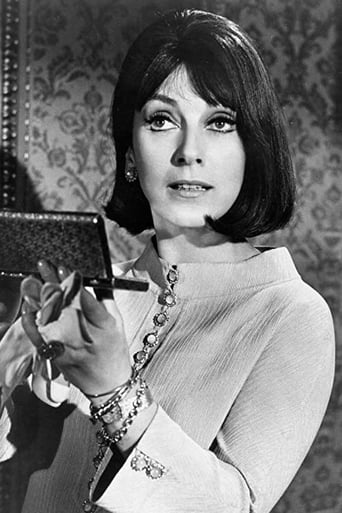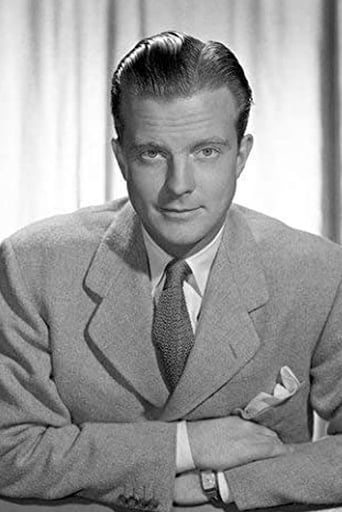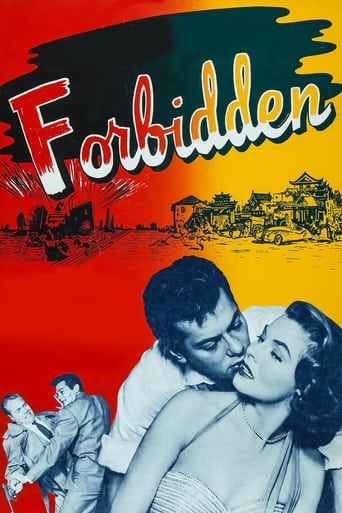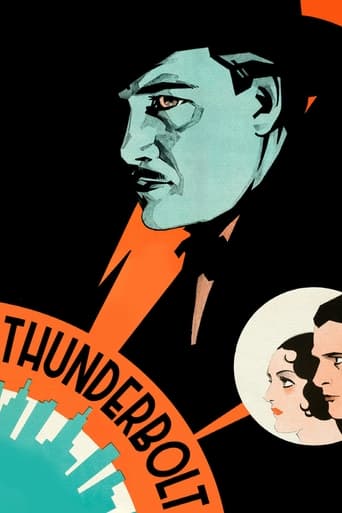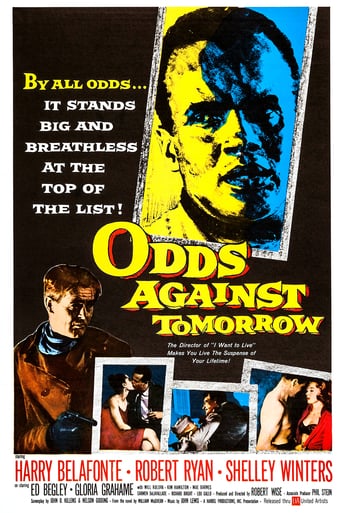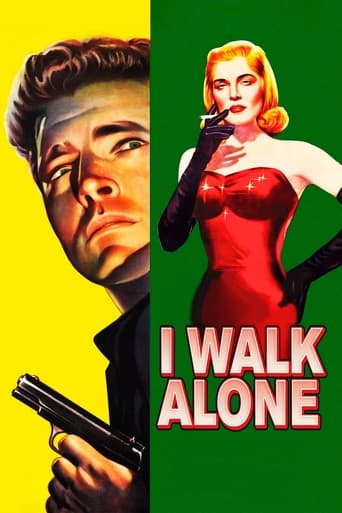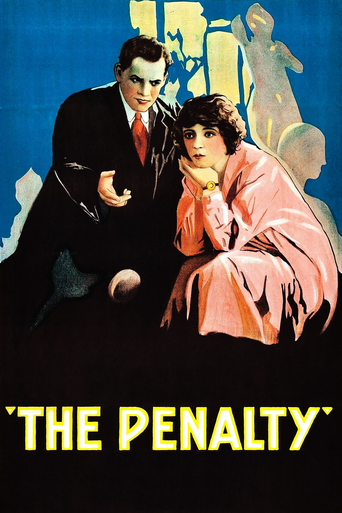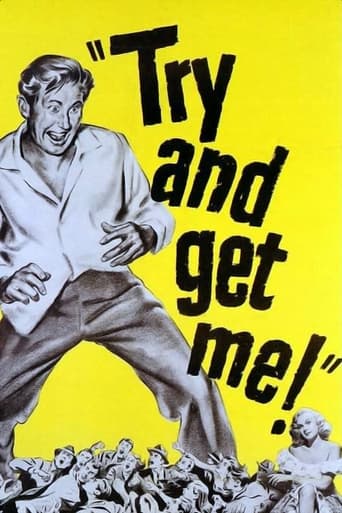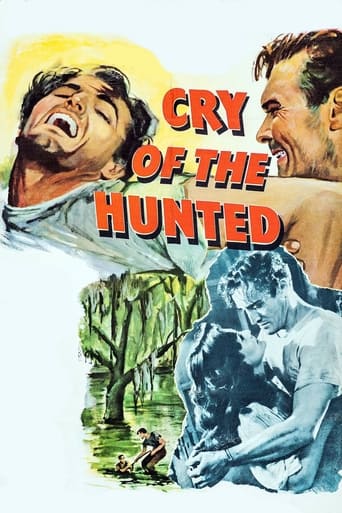The House on Telegraph Hill (1951)
Concentration camp survivor Victoria Kowelska finds herself involved in mystery, greed, and murder when she assumes the identity of a dead friend in order to gain passage to America.
Watch Trailer
Cast


Similar titles
Reviews
Fun premise, good actors, bad writing. This film seemed to have potential at the beginning but it quickly devolves into a trite action film. Ultimately it's very boring.
The film makes a home in your brain and the only cure is to see it again.
The story, direction, characters, and writing/dialogue is akin to taking a tranquilizer shot to the neck, but everything else was so well done.
Blistering performances.
Valentina Cortese and Richard Baseheart make this film together with a superb script an ace of films. Only the introduction to the story is gripping enough, the familiar situation of displaced persons in refugee camps after the war, here two ladies, one dying, the other desperate enough to do anything to take a chance. Valentina takes a chance and gets from the frying-pan into the fire, but in a completely different world - from the atrocious misery of concentration camps to webs of intrigue in the riches and luxuries of high society in California.Robert Wise was always one of the most reliable of directors, while he never repeated himself - it's astounding how different the character of every one of his films is from all the others. Here we find ourselves in a thriller like in "The Spiral Staircase" but with more interesting human relationships, as you walk in blindness among the manoeuvring characters as much as Valentina does, and you can only suspect the worst of almost every one of them - except the real perpetrator. Only in the last scene the real drama is revealed, and the only one who understood it all from the beginning was the dead woman in the portrait, who triumphs.It's a film of outstanding eloquence both in intrigue, dialogue, cinematography and above all direction. Even the music couldn't be better.
In the Bergen-Belsen Concentration Camp, the Polish Victoria Kowelska (Valentina Cortesa) has lost her husband and family in the war. She befriends her fellow citizen Karin Dernakova (Natasha Lytess), who miss her son Chris (Gordon Gebert) that lives with her Aunt Sophie in San Francisco. Karin dies three days before the liberation forces commanded by Major Marc Bennett (William Lundigan) arrive at the camp and Victoria assumes the identity of her friend to emigrate to the United States. However, she is informed that Aunt Sophie has just died and she stays in a camp for survivors.Four years later, she succeeds to go to the United States and meets Sophie's lawyer. She learns that Alan Spender (Richard Basehart) was assigned Chris' trustee and he invites her to travel with him to San Francisco to see Chris. Along their journey, they get married to each other and Karin has a cold reception from the housekeeper Margaret (Fay Baker) that raises Chris at the mansion on Telegraph Hill. Karin meets Major Bennett, who is a friend of Alan, in a party at home and she befriends him. Soon Karin is connected to Chris, but when she has a car accident, she suspects that Alan wants to kill Chris and her to keep the money for him. Is she paranoid? "The House on Telegraph Hill" is an enjoyable thriller with a story of greed. The movie has an impressive scene when Victoria's car loses the break on the hills of San Francisco. The mystery is kept to the end when the truth is shown. The Bergen-Belsen Concentration Camp is the place where Anne Frank died. My vote is eight.Title (Brazil): "Terrível Suspeita" ("Terrible Suspicion")
Effective Gothic thriller. I especially like the set-up, where Vicki (Cortese) gains admittance to the US by impersonating a dead fellow prisoner in a WWII concentration camp . That way she not only has her own secrets, but is also no unblemished young thing, which is usually the case in these woman-in-danger films. Once in the US, however, she marries into great wealth—a dream come true—but in the process gets more than she bargained for.A lot of the story depends on appropriate emoting. Fortunately, it's a powerhouse cast, but I especially like Fay Baker's icy nanny Margaret. She's quietly intimidating without overdoing it. Too bad she didn't get bigger roles in more movies. I can't help noting, however, that Cortese may be the only Hollywood leading lady without a perfect nose. It's a fine regal beak and I'm glad she hung on to it. I can also see why Basehart fell for her in real life.The San Francisco locations make a good open air contrast to the dark mansion interiors that dominate the characters. I expect director Wise applied his noir skills from the great Val Lewton series of horror flicks. Also, the ending amounts to a delicious twist, both unpredictable and very well thought out. My one problem was figuring out who's related to whom since that's important to the plot. I don't know if that's the screenplay's fault or mine.Anyway, it's an effective thriller with a fine cast and an imaginative ending, worth tuning in for.
During the Second World War, Victoria Kowelska, the widow of a Polish officer killed during the fighting, is arrested by the Nazis and sent to Belsen. While in the concentration camp she befriends Karin Dernakova, a fellow Pole who has family in America. Karin dies shortly before liberation and Victoria, who has Karin's papers, decides to assume her identity. As "Karin" she makes her way to the Telegraph Hill area of San Francisco where she meets Karin's young son Christopher who accepts her as his mother. She meets Karin's only other surviving American relation, her cousin Alan Spender, who starts paying court to her, and the two are eventually married."The House on Telegraph Hill" is sometimes described as a film noir, but like another reviewer I feel that it does not quite fit that description as it lacks a number of common noir characteristics such as chiaroscuro photography, a complex plot and an atmosphere of moral ambiguity. It is rather a suspense thriller in the style of Alfred Hitchcock with close thematic similarities to a number of his films, especially "Rebecca", "Suspicion" and "Notorious". Each of those films has as its main character a woman who has reason to suspect her husband of murder or attempted murder; here Victoria comes to believe (with good reason) that Alan is trying to kill both her and Christopher. In the final scenes a glass of orange juice takes on the sinister significance that the glass of milk had in "Suspicion".As in "Rebecca" and "Notorious" the action is set in a sumptuously decorated Victorian Gothic mansion. Following the revival of appreciation of Victorian architecture which took place in the late twentieth century this style of decoration seems a welcoming one, speaking to us of luxury and good taste. In the forties and fifties, however, however, things were different. The architectural styles then in vogue were the clean lines of Art Deco and the deliberate plainness of the International Modern Movement; with a few exceptions, such as John Betjeman, Victorian architecture had few friends. The decor of houses like these, therefore, reminiscent of a museum or a church, would have seemed to contemporary audiences fussy, outdated and airless, even sinister. (Max Ophuls also uses a Victorian Gothic atmosphere to similar effect in "Caught"). Another link with "Rebecca" is the character of the governess Margaret, clearly based upon Mrs. Danvers in that film.After "Bullitt" and the "Dirty Harry" films it became common for films set in San Francisco to feature car chase scenes, something to which the city's hilly terrain was well suited. "The House on Telegraph Hill" contains an early example of this phenomenon- although the scene in question is not exactly a chase. Victoria's brakes fail as she is driving downhill- they have, of course, been deliberately tampered with- and she has to fight to stay in control of the car. (Incidentally, I wonder if any real-life murderers to have ever adopted this method, so beloved of cinema villains, of killing their victims).I would not rank this film as highly as the three Hitchcock films mentioned above, although it has some good points; Valentina Cortese, for example, makes a sympathetic heroine as a woman desperately trying to find happiness after suffering much. Richard Basehart, however, is not a particularly memorable villain. (He and Cortese were to marry after meeting during the filming of this movie).Apart from the car scene mentioned in the previous paragraph, there are no directorial set-pieces worthy of the Master, and it lacks the sense of tension found in all his best films. (Unlike Hitchcock, the director Robert Wise was not a specialist in thrillers, but worked in a variety of different genres; his best-known films today are probably the musicals "West Side Story" and "The Sound of Music"). The device of having Victoria assume another woman's identity does not really come off; little in the rest of the film hangs on the fact that she is an impostor, and the plot would not have been significantly different if the real Karin Dernakova had returned to San Francisco after surviving her ordeal in Belsen. The final death scene is too drawn-out and lengthy to be effective. The film may have been intended as homage to Hitchcock, but I can think of several other films from the fifties and sixties ("Niagara", "The Prize", "Charade") which imitated the Master's style more effectively. 6/10 Some goofs. Belsen was liberated by British troops, not American ones as shown here. The normal Polish spelling of the heroine's name would be "Wiktoria", not "Victoria".

